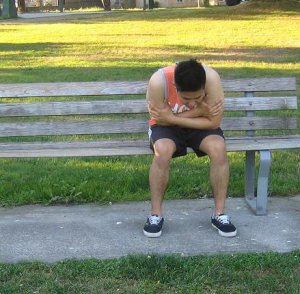Muscle knots range in size of a pinhead in smaller muscles to the size of a thumb that develops in the larger muscles. These knots cause pain in 2 ways such as latent trigger points that only cause pain when applying pressure and active trigger points that cause pain on the neural pathways and on non-localized areas.
Causes of muscle knots
- Acute trauma such as falling and injuries from playing sports that cause strain on the muscles and joints.
- Prolonged sitting with bad posture, sitting without support and incorrect way of lifting objects.
- Performing strenuous exercises and sports activities especially lifting of weights.
Maintain good posture especially when sitting for long periods of times to prevent back pain and muscle knots.
Treatment
- Massage the affected area by gently rubbing the knot in circular movements using the fingertips to release tension on the muscle fibers.
- Apply a cold compress on the affected area for at least 15-20 minutes at 3 times every day. Avoid applying the pack directly on the skin to prevent frostbite. Wrap the pack with a towel before placing on the affected area. Apply the pack on the area on the first 2-3 days after the injury. Another alternative is to make a cold pack using 3 cups of water mixed with 1 cup rubbing alcohol. Pour the mixture in a resealable bag, squeeze air out before freezing it.
- Apply heat on the affected area for at least 15-20 minutes at a times for 3 times every day. Warm a damp towel in a microwave for at least 30 seconds and place to the area.
- Maintain good posture especially when sitting for long periods of times to prevent back pain and muscle knots. Avoid slouching to prevent pressure on the affected muscles in the back.
- Perform yoga to relieve soreness of the back, increase flexibility and strength of the muscles.
- Perform regularly moderate aerobic exercises, swimming, elliptical machines and jumping jacks that make use of the arms and the legs for at least 30 minutes every day.
- Take the prescribed over-the-counter pain medications such as acetaminophen, ibuprofen and naproxen to lessen the pain and inflammation.
If pain in the back persists for several days, seek medical help immediately. It is also recommended to seek the help of the physical therapist for rehabilitation exercises and techniques to lessen the pain.
Disclaimer / More Information
The material posted on this page on muscle knots is for learning purposes only. Learn to recognize and manage muscular issues including muscle knots by taking a first aid and CPR class with one of our training providers.

